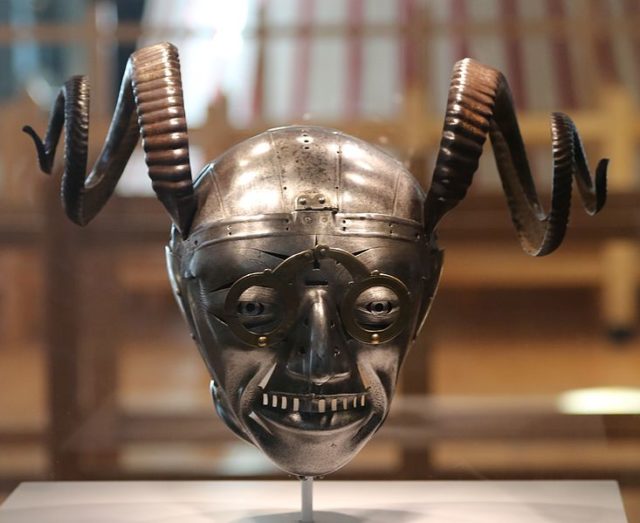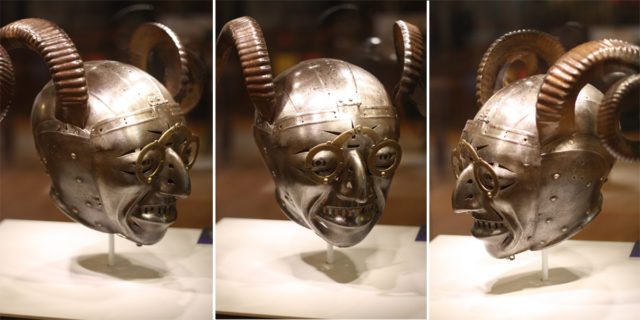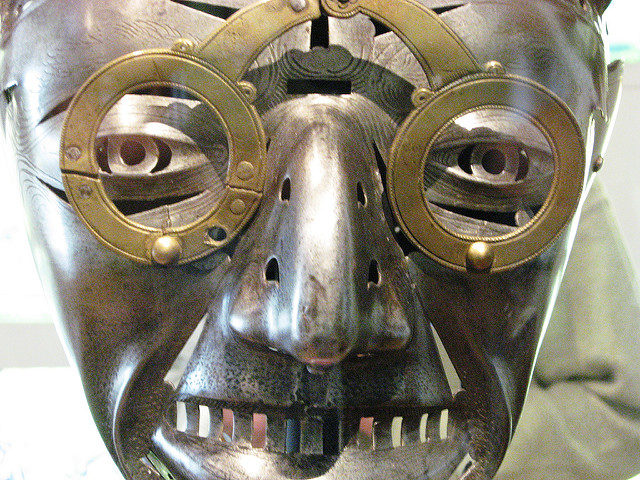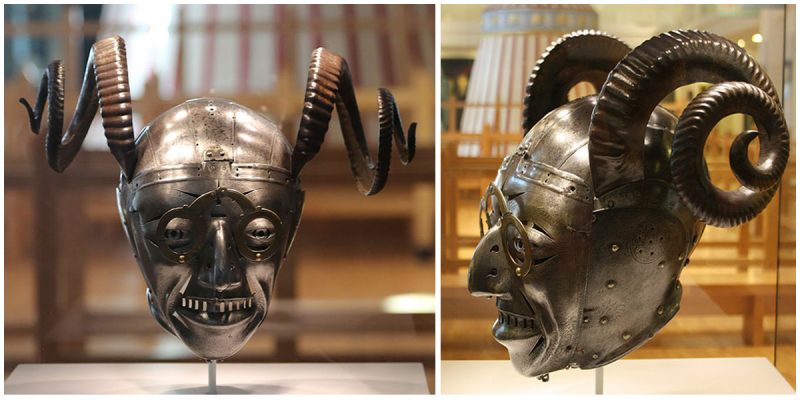Made by Austrian goldsmith Konrad Seusenhofer, a leading armor manufacturer of the 16-th century, this strange-looking Horned helmet was originally part of a suit of armor presented by the Holy Roman Emperor Maximilian I to Henry VIII in 1514.
The Horned helmet is technically called an armet, with protection for the skull, hinged cheek pieces, and a face defense. An armet is a type of helmet which was developed in the 15-th century. It was extensively used in Italy, France, England, the Low Countries and Spain.


It was distinguished by being the first helmet of its era to completely enclose the head while being compact and light enough to move with the wearer. Its use was essentially restricted to the fully armored man-at-arms.

Originally, the helmet had silver-gilt panels placed over rich, velvet cloth. The glasses were implemented because Henry VIII was actually nearsighted, a theory supplemented by the fact that there were dozens of glasses in his possession after his death. It was made for use in pageants rather than for combat. Henry VIII might have worn it at sumptuous events such as the parades that accompanied tournaments.

The extraordinary appearance of the helmet probably saved it from destruction, but the rest of Henry’s armor no longer survives (probably discarded as scrap metal after the Civil War).


For some time after Henry’s death, this helmet, because of its extraordinary appearance, was believed to have belonged to his court jester, Will Somers, who most likely incorporated it into his act.
The helmet is now a prized possession of the Royal Armouries, Leeds. The full armor from which the Horned helmet originates was one of three of similar design, made by Seusenhofer, but only the armor given to Maximilian’s grandson, the future Emperor Charles V, survives intact in Vienna.
